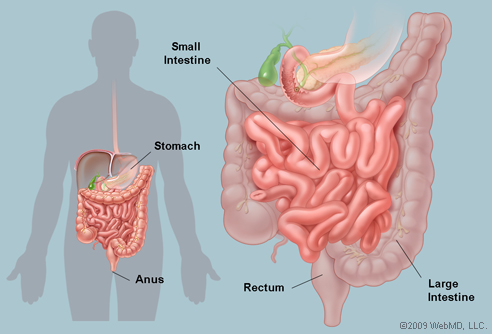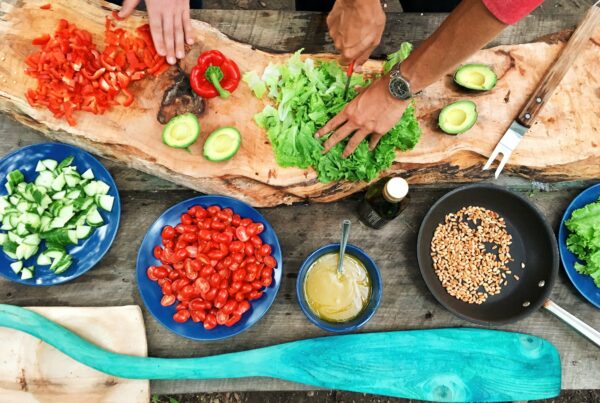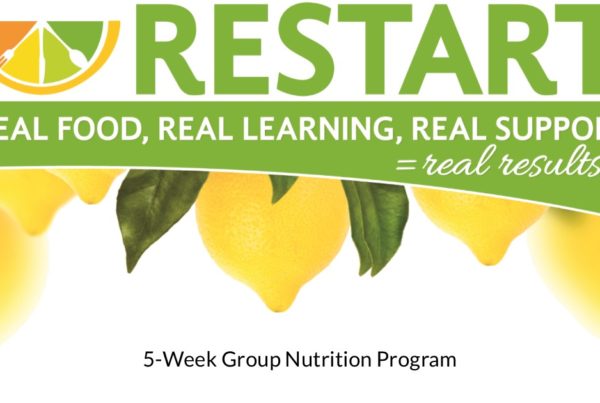 For a number of reasons, many people don’t have very good intestinal health. Most of the food we eat is not only lacking in nutrients, it’s filled with additives, preservatives, and other mysterious chemicals. From the air we breathe and the water we drink, to the thousands of chemicals we come into contact with each day – it all takes its toll on the colon and, ultimately, on our overall health.
For a number of reasons, many people don’t have very good intestinal health. Most of the food we eat is not only lacking in nutrients, it’s filled with additives, preservatives, and other mysterious chemicals. From the air we breathe and the water we drink, to the thousands of chemicals we come into contact with each day – it all takes its toll on the colon and, ultimately, on our overall health.
The digestive process begins as soon as food enters the mouth. As we chew our food we increase the surface area of food particles making the food more susceptible to digestive enzymes. Smaller food particles also travel more easily (and quickly) throughout the small and large intestines. In the stomach, food is mixed with gastric juices containing digestive enzymes and hydrochloric acid. This mixture is known as chyme. From the stomach, the chyme moves into the small intestine. There, more enzymes and bile are mixed with the chyme, and the breakdown of dietary proteins, fats and carbs is complete. Some carbs are not digested by human enzymes and they pass undigested into the colon.
Most nutrients are absorbed in the small intestine. However Vitamin K, niacin, and B vitamins are formed by beneficial bacteria in and absorbed by the colon. Vitamin K is necessary for blood clotting and Niacin and the B vitamins affect energy levels, metabolism, feelings of fatigue and the function of nerves. Evidence suggests that serotonin is created in the colon as well.
The colon is also designed to eliminate toxins. When the colon is not working well, it begins to absorb toxins into the blood stream rather than expelling them.
You can see why having a healthy colon is important.
So how do you know if you have an unhealthy colon? First of all, if you’ve ever taken antibiotics there’s a pretty good chance that you colon health isn’t optimal.
Why? Because one of the determining factors of colon health is the bacterial in your gut. Is it friendly or unfriendly. Antibiotics are designed to kill bacteria, and they don’t care whether they’re friendly or unfriendly. Birth control pills, not enough dietary fiber, poor eating habits, alcoholic beverages, chlorine, sodium fluoride, and stress all contribute to intestinal flora imbalance too.
Our digestive system is home to more than 500 different bacterial species, and if 85% of the bacteria in our colon is friendly then the colon can handle the 15% of unfriendly bacteria. The problem is most of us have this reversed. The result?
Diarrhea, constipation, excessive gas, bloating, allergies, eczema, irritable bowel, inflammatory bowel, kidney stones, ear infections, strep throat, colds, vaginal yeast infections, Crohn’s disease, lactose intolerance, thrush, athlete’s foot, cancer, and on and on.
How can this be? Well, friendly bacteria (called probiotics – there are 1000’s of strains) prevent the overgrowth of yeast and fungus. They compete with candida in the intestine, they suppress the growth of potentially harmful bacteria, they produce substances that can lower cholesterol, they enhance the protective barrier of the digestive tract, they help produce vitamin K, they improve immune function, they lower blood cholesterol in some people, they lower blood pressure in some people, they aid in the digestion of lactose, they prevent cavities, they decrease the passage of bacteria or antigens from the intestines to the blood stream, they fight pre-carcinogenic or mutagenic compounds, they lower the pH of intestinal contents, they utilize oxalate (oxalate contributes to kidney stones), they detoxify ingested carcinogens, they produce compounds that inhibit the growth of tumor cells, and more!
So where do you get these probiotics?
Well, believe it or not, store bought yogurt probably isn’t your best source. Neither is the probiotic pill that you buy at the health food store. Why? Because the yogurt has been pasturized which kills all the bacteria and then they add one or two strains of probiotics, but remember there are 1000’s of strains; and the same goes for the probiotic supplement. Plus the supplement is dried, so the probiotic strains need to hydrate before they can be effective.
So what’s a girl to do?
Well, probiotics can be found in homemade yogurt and kefir as well as naturally fermented sauerkraut and other naturally fermented foods. So when you ingest these foods, you’re actually putting friendly bacteria back in to your gut!
So what does this have to do with the “perfect trifecta for intestinal health”? Well probiotics is one part of it. Let me tell you what we do in our family.
First, every night before bed we take fresh garlic and chop it up fine – about a teaspoon full will do. (You’ll find more information on garlic, here.) Then we let it sit for 14 minutes (find out why, here) and swallow it like a pill. The garlic kills the unfriendly bacteria in my gut and feeds the friendly bacteria (it’s what’s known as a pre-biotic). (No, I don’t have garlic breath and I don’t smell like garlic when I sweat.) 🙂
Second, every day we take a teaspoon of Redmond Clay and mix it in a cup of water, let it sit for a few minutes, stir it again, and drink it. (You’ll find more information on Redmond Clay, here.) Among other things, the clay is primarily negatively charged, but unfriendly bacteria, toxins, parasites, heavy metals, and radiation, are all positively charged. So as the clay travels through the digestive system, the unfriendly bacteria (and other things) are attracted to the clay and eliminated.
Third, throughout the day we drink kefir. This puts friendly bacteria back into our system.
So, we’ve got the garlic killing the unfriendly and feeding the friendly; the clay pulling the unfriendly out of the system; and the kefir putting friendly back into the system which the garlic then feeds. See how that works?!
So, what have I noticed since I’ve been implementing the “perfect trifecta” in my life? Well, I’m more regular in my bowel movements (sorry, but it’s the truth). Remember that your body is like a donut – round with a hole through the center. The top of the hole is your mouth and the bottom of the hole is your anus. Whenever the top hole opens it shouldn’t be too long before the bottom hole opens and if it isn’t, things need some improvement.
The other thing I noticed is that my sugar cravings stopped. I didn’t think too much of it until a friend of mine commented that she was having the same result! But it makes since. What do the unfriendly bacteria feed off of? Refined sugar, refined flour… So, when I have more friendly bacteria than unfriendly bacteria, my body isn’t going to crave the things that feed the unfriendly bacteria!
Third, I have an overall feeling of health and well-being and no “brain fog”!
Not too shabby for a few “home remedies”, huh?! 🙂
So, have you had any experiences using garlic, clay, or kefir? If so, I’d like to hear about your experiences. 🙂
This post was shared with The Healthy Home Economist and Kelly the Kitchen Kop.










Just saw your blog for the first time from an entry on the Monday Mania blog hop. Just wondering about your use of the word “sole” in your blog name. Is it because you are advocating Sustainable Organic Local Eating, or because you do foot work? You can answer me directly at my email address.
Thanks, a curious wordsmith.
Awesome post! I try to remember to take garlic regularly. I do eat a lot of yogurt. And I’ve been meaning to buy clay…need to get on these things!
Hi, I found you blog on one of the Real Food Wednesday posts. Ever since I read it, I have started doing the garlic every night before bed. I have been drinking raw milk, and just started making homemade raw milk yogurt, and also want to add some fermented veggies daily. I’m just wondering with the Redmon Clay – what kind do you use? There are a few options on their web site (a gel, the Daily Detox, the plain clay, etc). Just wondering which one to get!
Thanks!!
Good for you Katie! I’d love to hear your results! Remember though that the probiotics in yogurt are wonderful for the mouth, throat, and esophogus, but don’t survive the digestive juices of the stomach. To benefit the colon you need to use kefir. As for the clay, I just use the plain old clay. It isn’t very expensive and it’s easy. I started out using 1/3 tsp in a cup of water every night for a week, then I went to 2/3 tsp in a cup of water. After a week of that, I went to 1 tsp clay in a cup of water, and that’s what I’ve been using ever since. On my web site under the “Health & Wellness” tab, you’ll see a link to Redmond Clay. There’s a lot of information there that you might find interesting as well as a free downloadable book called, “We Eat Clay”. My family has been visiting from Michigan and I started my mom using the clay when she got here. She’s commented already about how well it’s been working.
Good luck!
~ Kathy
Oh, that is good to know about yogurt vs. kefir… I didn’t relaize that there was a difference… I thought all probiotics were the same 🙂 I was on antibiotics for 2+ years for acne, so I am dealing with all sorts of yeast/digestive issues now. Of course, the doctor says it is not related to the meds… but, how could it NOT be?? Gotta love doctors LOL
I was actually looking at some Kefir at Sprouts (one of the health food stores around here) the other day, but noticed that it’s full of sugar and preservatives. Soooo… I’ll be trying to locate some Kefir grains to make my own soon!
Thanks for the info!
Yes, you definately want to make your own kefir. 🙂 I’m not sure where you live, but I purchased my kefir grains on ksl (something like Craig’s list, only local). If you can’t find any, you can also try online at Yemoos.com or do a Google search for Dom’s kefir. Yemoos sells kefir grains and I think Dom’s does too, but they are both great resources for learning about kefir. Dom’s has TONS of information and some recipes, Yemoos also has a lot of information and TONS of recipes, PLUS they have a live chat once a week (I think on Thursday) where they’ll answer any question you might have.
Have fun! 🙂
Funny you mention Yemoos, because someone else had told me about them, and I was just looking at their website last night. I think I am going to order from them. They have a whole kefir making kit, including the grains, that looks neat. Thanks!!
What about using bentonite clay (purchased from Bulk Herb Store)? If anyone wants any water kefir grains, I have tons of them. Just pay for the shipping, which is $5.35. I may have some milk grains, but they don’t grow as fast.
Hi Amy, 🙂
Bentonite clay is a class of clay that can be ingested. Redmond clay is a bentonite clay, but tests have shown that it has a greater drawing power than other bentonite clays, plus the cost is typically less too. 🙂
Thanks for offering your kefir grains. They do grow fast don’t they! I have a couple gallons of grains I think! 🙂 The water grains are great for making soda, but can be a little more picky than the milk grains. We use our milk kefir EVERY day though and love it! This morning I made a smoothie with pineapple juice, banana, marionberries, kefir, honey, and cinnamon…delicious! 🙂
~ Kathy
Hi Kathy, Thank you for the wonderful information you have shared in this article. I am interested in researching more on the clay and noticed you mentioned your website and the health and wellbeing tab. and the free ebook that is downloadable from that link. Unfortunately I have not been able to locate this website can you give me the details I need to access this information.
Cheers Lou
HI Lou, 🙂
This is my website. There are tabs across the top to the pages of my site, and below the picture there are links to the blog categories. Here’s the link for information on Redmond Clay: https://mindbodyandsoleonline.com/health-nutrition/redmond-clay/. 🙂
Hi Kathy, Great article! I saw it on The Healthy Home Economist. Glad I was able to find your site through it 🙂 Do you use raw or pasteurized milk for your milk kefir? I’ve used raw, and I’m sure it’s best since the proteins aren’t altered by heat, but it’s just so expensive here (CA, last time I calculated I think it was $24/gal). Since we are adding the kefir grains, hence probiotics/enzymes, would the kefir still be beneficial using pasteurized milk? Thanks!
Wow! $24 a gallon! We pay $7 a gallon here and I thought that was pretty pricey!
I’ve used both pasteurized and real milk to make kefir. On the good-better-best scale for probiotics, drinking kefir from pasteurized milk is good (because as you say the kefir grains are adding friendly bacteria), drinking kefir from real milk is better, best would be including a variety of naturally fermented foods in your diet daily.
I hope that helps. 🙂